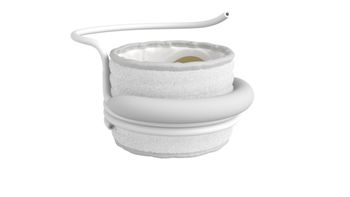
Viewpoint: E-prescribing not an improvement
Medical Economics readers discuss e-prescribing, maintenance of certification, the division of practice income, and whether seeing 10 patients per hour is a realistic goal.
I agree with Steven Gitler, DO, concerning his criticism of e-prescribing (
As a physician who has used an electronic health record (EHR) for 12 years, I had long ago adopted faxing as a method of transmittal, thus eliminating the handwriting problem. Pharmacies were quite efficient in returning approvals via fax, which were directly incorporated into the EHR, which was very helpful. With the new EMR regulations, I can no longer send any controlled drugs without either separately faxing or calling the pharmacies.
Pharmacies are not efficient in receiving the online prescriptions, resulting in delays and patient complaints. Entry of information is now more complex, calling for recognition of dosage forms (tablets versus capsules), package sizes, and other information irrelevant to the prescribing physician.
Further, Medicare now requires physicians to write prescriptions at the time of visits or be penalized. Since my patients rarely get new prescriptions at their visits and refill according to their needs, I am paying a 1% penalty.
The panoply of menu choices in the e-prescribing programs offer so many more opportunities to write the wrong medications that I can believe there will actually be a increase in overall medication errors unless the system is redesigned in favor of the prescriber rather than the software makers or pharmacies.
Robert J. Simon, PharmD, MD
Sherman Oaks, California
Don’t let ABMS usurp state licensing boards
I’m writing in response to two letters in the
Many physicians believe that if either MOC or recertification (or both) are used as requirements for re-licensure or for admission to hospital staffs, or for acceptance on insurers’ panels, then the American Board of Medical Specialties (ABMS), for practical purposes, will have usurped the authority of state licensing boards. The threat they pose will continue as a serious obsession for most physicians until it is eliminated.
Unfortunately, our specialty societies, along with state and county medical societies and the American Medical Association, have not distinguished themselves in combating the ABMS’ arrogation of power and its potential to harm physicians.
Patricia Edwards, MD, in her letter emphasized that if she had to be studying for recertification and MOC, she may not have had the time to take courses that were relevant to her pediatric practice such as depression in teens and osteopathic manipulation.
Like her, many physicians believe that the boards either have not discovered, have not understood, or have simply ignored that physicians customize their practices and their continuing medical education (CME) to the demographics and the needs of their communities.
With its insistence on core competencies, MOC ignores this vital “customization factor.” Without it, CME loses its practical value and lapses into an academic exercise. Worse, it takes away the little time that physicians have for CME.
Edward J. Volpintesta, MD
Bethel, Connecticut
MOC exam not based on clinical practice
Regarding Lois Margaret Nora’s commentary (
The test that we took was not a test that could discern who was a cardiologist practicing good clinical cardiology that is guideline-based. If the ABIM continues to test in this fashion, it will eventually no longer be relevant, as most doctors will choose not to recertify.
I also understand that competitors to “board certification” are now popping up, and these could certainly be a reasonable alternative if the majority of physicians no longer find the ABIM in touch with clinical medicine.
Dean Heller, MD
Miami, Florida
No perfect way to divide practice income, expenses
I enjoyed your
As with dividing expenses, there is no perfect solution to dividing income and most practices do simply credit receipts by doctor. However, I’ve run into several situations of disparities in the collection rates that the physicians experienced, leading to some dissatisfaction with the typical division of income.
In one such situation, the newest physician was getting the lion’s share of Medicaid patients and, therefore, the lowest reimbursements, even though he was producing at the same level as the more senior doctors. Our solution was to credit each physician for 50% of their receipts and then divide the other combined 50% based on production. It worked perfectly and satisfied all the doctors.
Gary Davis, CPA
Ocracoke, North Carolina
10 patients per hour not realistic
It is extremely frustrating to hear Michael Brown quoted in an article (
Harken back to the December 21, 2007, issue of Medical Economics (
What these consultants should be doing, if they had any new concepts or any new ways of analyzing a practice’s performace, is to advise and consult on those concepts and with that level of analysis. They should not be adhering to the principle of just “work more” and “see more,” but adhering to and promoting the principles and ideas that would allow the physician to work smarter, not harder.
I for one can do a far better job identifying the problems and processes that plague physicians, especially primary care. I am sure your seven dissenting physicians whose letters appeared in a previous issue can do so as well. I am not so sure we’d all come up with the same ideas and solutions, but it certainly is not to see 10 patients an hour.
No PCP can provide quality and comprehensive care for 8 hours a day at 6 minutes an office visit. It’s impossible, and anyone who believes it can be done should get a new job.
Alan T. Falkoff, MD,
DABFM, FAAFP
Stamford, Connecticut
Address correspondence to
Newsletter
Stay informed and empowered with Medical Economics enewsletter, delivering expert insights, financial strategies, practice management tips and technology trends — tailored for today’s physicians.








